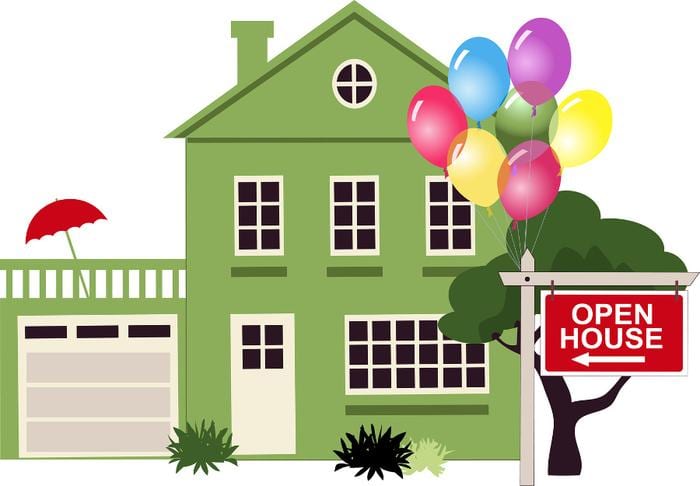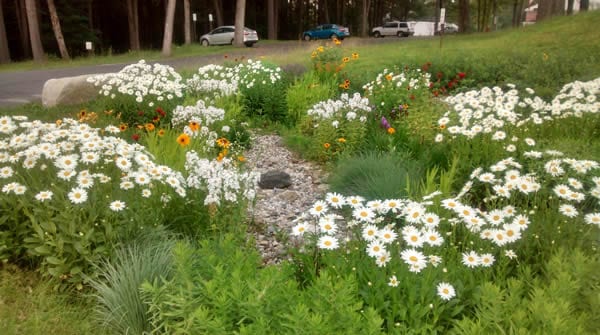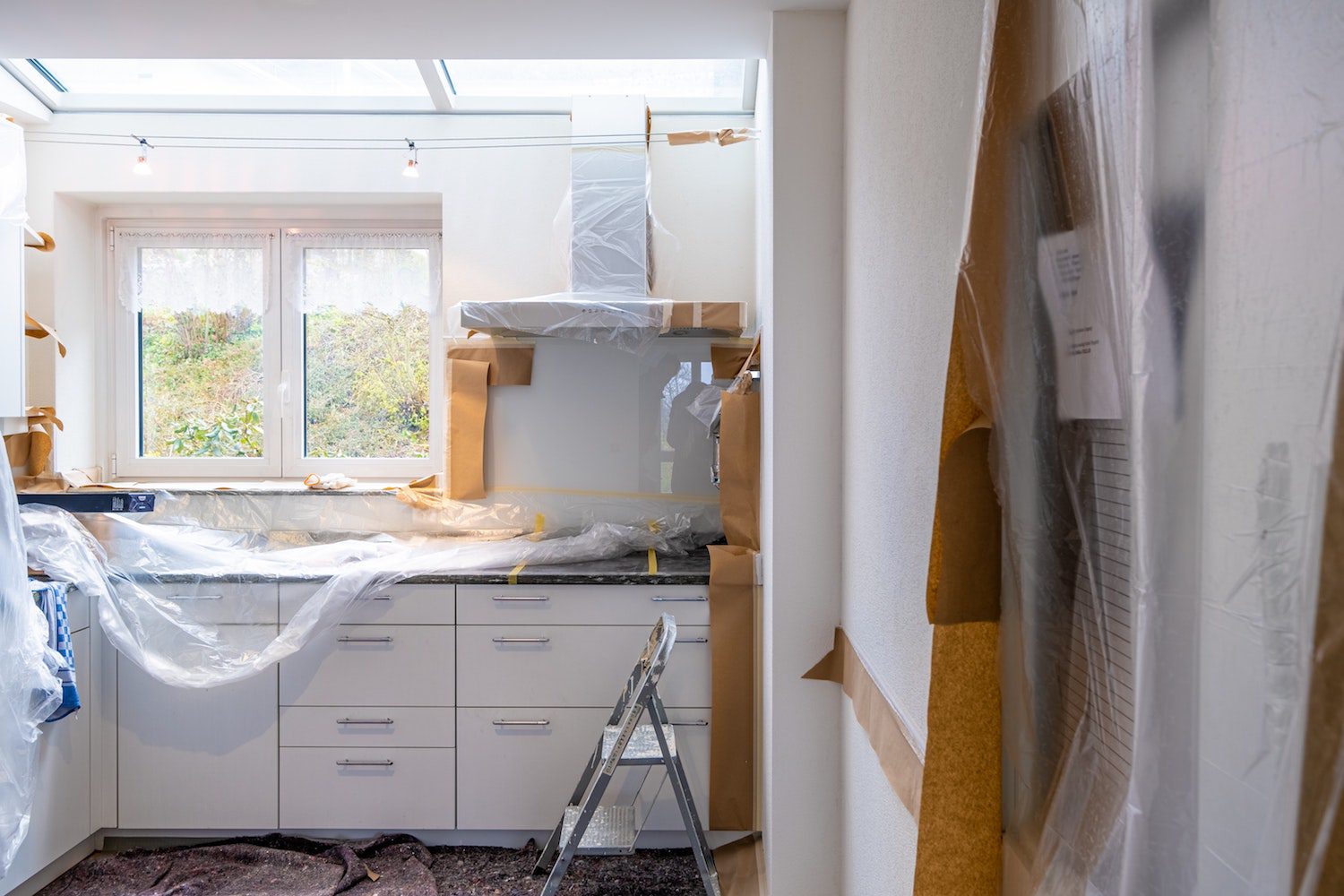Author: KP & Associates
Sep 1, 2016 / Your Home
City Living: Can urbanites live off-the-grid?

The other day, someone asked me if I would be willing to live ‘off the grid’. The romantic notion of moving to the backwoods and living off the land started to take shape in my imagination until I realized that it meant leaving my blow dryer and espresso maker behind.
Definitely anyone that is handy and currently living on a 5 acre plot outside the city will find transitioning to ‘off the grid’ a whole lot easier than city folks.
In fact, for city dwellers, the idea of going off the grid, while a nice concept, is not entirely attainable. In many places in Canada it’s not just space limitations it’s the municipal bylaws that are holding us back.
But that doesn’t mean we can’t think about reducing our footprint. There are loads of things that city dwellers can do to start living life ‘less on the grid’.
The experts suggest that living a more sustainable lifestyle is a more about the journey than a destination. And it certainly doesn’t have to be an all or nothing proposition.
Here are a few ideas for urbanites:
Less is More
As real estate agents, we talk ‘de-cluttering’ to almost all of our sellers. Everyone seems to think they have too much stuff. The trick then is to purchase less in the first place. For every new acquisition, ask yourself, ‘Do I really need this?’ or ‘What am I prepared to get rid of, to make room for my new purchase?’ Bonus, if you buy less, you’ll have less to de-clutter.
Turn-It-Off
If you aren’t using it, it doesn’t need to be on. Many of us run our household appliances (TV, lights, air conditioners) night and day. Following your hydro bills and mindfully cutting down your power intake by making due-with-less, will not only help the environment but your pocket book.
Home Efficiencies
Many people wrongly believe that off-the-grid homes are cold, dark, shaky and damp. Quite the contrary. Off-grid homes are vastly more efficient: better insulated, more-responsibly heated, more-intelligently-lit, and better designed to take advantage of passive solar energy. Consider having a professional audit done on your home to see where you can gain efficiencies. Even installing a single solar panel is a positive step.
Another option is to consider a Ontario Home Energy Audit. It appears that the $5,000 renovation grants are no longer available but there are numerous other grants and rebates available through the government of Canada. Keep in mind that these agencies require positive proof that the work was complete, which usually means before and after photos and receipts.
Getting ‘Round Town
As urbanites, we can live beyond our cars. Public transportation, walking even biking are options. Not taking your car requires a little more planning, time and sometimes a creative idea. For example a brisk walk to work could do double-duty as a morning workout.
Gardening
Nothing could be finer than growing your own vegetables. If you’re not a gardener, enticing your neighbour into extending their wonderful garden unto your property might be an option.
Many cities, certainly the City of Burlington has, have created community gardens. There is an application process and a few rules, but an easy way to grow a few vegetables particularly if you are an apartment dweller.
Many urban gardeners have turned their front lawns into ‘wild garden delights’, often a mixture of flowers, plants, herbs and the odd tomato plant.
There’s no debate which is better for the environment. Gardens are not only more attractive, they provide homes for birds, insects and rodents and don’t require the use of an annoying lawnmower.
Save On Water
I’m not advocating ‘shower with a friend’ but there are ways to reduce your water consumption. Start with a rain barrel for watering the garden. Gardening expert Ed Lawrence told CBC listeners that taking a 5 gallon pail into the shower was a great way to collect water and they would be absolutely shocked as to how much water went down the drain.
Working towards a smaller footprint will open your eyes to things that you’ve been taking for granted, and help you understand the concept of consumption. Small changes can have large consequences.
Wanting a smaller footprint, takes time, planning, creativity, but it can also be a whole lot of fun.
Our team of real estate sales professionals is committed to finding you, your dream home. Whether you’re looking to buy or sell, the Karen Paul team is here to help with any questions.
Interested in learning more? Send us a message here and we’ll be in touch with you soon after.
Aug 25, 2016 / Buying
Moving Made Easier : 7 Great Ideas

It may have been a while since you moved. If so, the task probably looks pretty daunting.
Believe it or not, real estate agents chat about moving almost as much as we do homes or taxes. Whether it’s moving-in or moving out, there’s lots to do, and there’s simply no point in denying it, it’s stressful.
There are hundreds of moving checklists online that can be easily adapted for any given situation.
Our real estate team took a different tack. We chatted about some of the experiences our clients had and came up with 7 tips that may not be on any list, but we think will make a difference in your move.
Start a Moving Binder.
Hands down, we thought this was the single best idea.
Put everything down in one single place that is easily accessible to the entire family. And keep it organized with separators for different topics such as ‘new home/old home’; sleeves for storing your receipts, estimates, copies of emails and inventory of items. Don’t forget adding reams of paper for making notes.
Since a lot of communication nowadays is done via your computer, create a new folder in your email program and store all related moving emails in that folder. For internet searches, create a separate bookmark folder to store informative websites. In the ends it’s about having easy access, when you found something really interesting.
Whatever you do, don’t send an email or make a phone call without your moving binder in your hand.
We don’t promise that a moving binder will make your move stress free, but it will help reduce the number of things you have to remember and keep things in one place.
At the same time, consider starting a suitcase or lock box to store your important papers (passports, insurance documents) so they are in one place, easy to find and most importantly, won’t get lost.
Moving Companies.
Most of us are beyond asking our buddies to help us move and are ready to hire a professional. Choose a professional and reputable moving company and be very clear on the services they offer.
Before you contact them make sure you know how many rooms in your home and the type of furniture (beds, appliances, couches). Most moving companies will want to know how many levels and you could surprise them by also knowing the total number of stairs.
Some moving companies are willing to provide quotes over the phone, but it never hurts to get it in writing. If you are particularly concerned about your home, ask for a walk-thru so that there won’t be any surprises on moving day.
Everyone moves at the end of the month and on weekends, so moving on the 7th or 21st could save you some dollars.
Scheduling the time of the move can be a little complicated and involves your solicitor, who will know the exact time you can expect to get the keys to your new home. From there you can work backwards. Most moving companies can gauge how much time they need for certain sized homes.
Don’t be chintzy on the supplies (boxes, tape, Bubble Wrap, and permanent markers) they can always be re-used or donated to the next friend who is planning to move. Don’t forget to order specialty containers, such as dish barrels or wardrobe boxes, which your mover can help you with.
Those were our main thoughts. But we have a few other notables that keep cropping up with clients:
- Address Changes: If you haven’t already, this may be the time to go ‘paperless’. Most companies offer a bonus when you sign on for an email notice over an envelope in the mail. Just in case, ask a trusted neighbour to keep a look out for mail after you’ve moved.
- Home Insurance: Don’t cancel your home insurance until your solicitor confirms the title has been officially been registered to the new home owner. It’s only one day, and anything could happen during the move.
- Moving Obstacles: If you plan to visit your new home to measure the room sizes or check for draperies, you might also take a moment to check the width of the door-ways to make sure larger pieces of furniture will fit.
- Return Borrowed Items: While you’re de-cluttering no doubt you’ll find items that were borrowed once, a long time ago. Host a treasure hunt barbecue for your neighbours not just to say good bye, but as an opportunity ‘Return what you borrowed – find what you lent.’
- Chemicals & Toxins: Moving day is not the time to take all of the household chemicals properly (old paint, caustic cleaners, etc.) that you’ve been storing to the local Toxic Waste Centre. That should be done when you are de-cluttering.
Getting to know your new neighbourhood can take time. Helping your family, in particular your kids transition through the move can be time consuming. By getting referrals from your doctor, dentist, mechanic, druggist, even your hairdresser you will have a head start into settling into your new community.
As your real estate agent, our job is make the transition to your new home seamless. And while this might be only your first or second move, it’s not ours. We’re always happy to share our ideas and provide real estate tips.
Our team of real estate sales professionals is committed to finding you, your dream home. Whether you’re looking to buy or sell, the Karen Paul team is here to help with any questions.
Interested in learning more? Send us a message here and we’ll be in touch with you soon after.
Aug 18, 2016 / Selling
Home Evaluations – Calculating Your Home’s Square Footage

A home’s square footage is one of the factors a real estate agent takes in to account when completing a home evaluation. And if all houses were single-story square shaped buildings, calculating the square footage of your home would be a simple matter.
Your home’s square footage is relied on to estimate a home’s value, cost to construct and overall livability. So it is worth understanding exactly what square footage means and how it is calculated.
Matt Clawson, Houzz contributor, recently posted this great article: How to Calculate a Home’s Square Footage ‘Understanding your home’s square footage requires more than just geometry’.
We have edited it down and added our comments. To dig deeper, check out Matt’s original article along with the wonderful diagrams and photos he included.
_______________________
All square feet are not created equal.
There are basements, attics, garages remodeled into living spaces, and oversized storage rooms with poorly accessible corners.
However, for the most part, calculating square footage, is all about rectangles, with the help of a few formulas.
Calculations for the square footage of a home are taken from the outside dimensions of the structure (so exterior and interior wall thickness is included).
If your home exterior is easily accessible, you can do it yourself. By now, there’s probably an app or 3D technology that can do it for you, otherwise a 100-foot tape measure will do.
Walk around the exterior measuring each segment and drawing the shape as you go. If, like most homes, your exterior has a series of square corners, you will be able to take measurements easily at the foundation, rounding measurements to the nearest half foot and sketching the exterior shape of your home.
If there are overhangs or slopes making exterior measurements difficult, measure from the inside, and add the width of each exterior wall (likely half a foot, but you can check at the door jamb of an exterior wall).
The next step is to sit down with that paper and break the shape into a series of rectangles. (There are plenty of instructional videos available online if you’d like a hands-on lesson.) Then it’s a  matter of using simple (relatively speaking) math: Width x Length = Area
matter of using simple (relatively speaking) math: Width x Length = Area
You might find a triangle or two (Area = 0.5 x Base x Height). For example, a bay window with a pair of angled walls might (geometrically) be a pair of triangles with a rectangle in the middle.
Add up the spaces of each of your rectangles and triangles, and subtract any areas that should not be included in overall square footage (for instance, partially enclosed patios or exterior storage areas), and you arrive at the total area (square feet).
If Only It Were That Simple.
Angled walls are only the beginning of your problems. Some additional, generally accepted rules follow:
- Below grade, basements are generally not included. They are often noted separately.
- Attic areas are counted if conditioned in the same manner as the rest of your home, accessible from livable space and with ceilings that are at least 84 inches high.
- Stairs are included.
- Garages and other nonconditioned spaces are not included. Some garages have been converted into habitable spaces and are included in the square footage calculations.
- Condominium square footage is typically calculated using interior dimensions.
- When calculating the square footage of homes with second stories, second floor measurements sometimes need to be taken from the interior, investigating the overall shape of the second floor as it pertains to the first. The exterior wall thickness is then added and included in the overall square footage.
- Storage rooms are included in square footage calculations if the room is conditioned in a similar manner to the rest of the home and is accessible from living space in the home.
The professional tradespeople who did your home improvement renovations use the same formula (WXL=Area) to calculate square footage. However, those calculations are task specific and maybe not be accurate enough for your purposes.
If you feel you are up to the challenge yourself, break out the 100-foot tape measure and get to work. Simple structures are pretty straightforward. In complicated homes, you may want to save yourself the headache and ask a professional.
Want to know your home’s square footage? I’d love help out and complete home evaluation at the same time. I’ll even bring my own 100′ tape measuring tape.
Our team of real estate sales professionals is committed to finding you, your dream home. Whether you’re looking to buy or sell, the Karen Paul team is here to help with any questions.
Interested in learning more? Send us a message here and we’ll be in touch with you soon after.
Aug 11, 2016 / Buying
How To Tell If A Neighbourhood Is Improving

Finding the right neighbourhood is an important part of the ‘looking for a new home’ journey. While some neighbourhoods are well established, others are on the upswing and undergoing gentrification.
So how does one determine whether or not a neighbourhood is on the upswing? Who knows best?
This is precisely the kind of information your realtor is able to provide. It’s our business. Knowing what’s happening in neighbourhoods and how they measure-up is just as important and critical as knowing how many bathrooms in a particular home.
But if you’re just starting out and want to know how you can determine whether a neighbourhood is improving or not, here are a couple of common indicators:
Real Estate Sales Activity.
> A real estate sales professional has a wealth of information at their disposal. Realtors know whether homes in a particular area sell quickly and for a good price. They’ll also be able to tell you if the neighbourhood is in high-demand. And that’s a great indicator. If people want to live in a particular area then it’s a desirable area.
Neighbourhood Care.
> When you take a walk around a neighbourhood what is it telling you? Do you have the sense that homeowners are taking good care of their homes and properties? Are the lawns mowed? Is the landscaping trimmed? Are flowers planted? Is the driveway shoveled?
> Homeowners are more likely to look after their properties when they are happy in their neighbourhoods.Construction Projects.
> Take note if homeowners are investing in their homes. Look for long-term and short-term projects. Count the dumpsters. Look for a local hardware store in the area because it feeds into the rebuilding that local homeowners are doing, and a good place to ask questions.
> Upgrading projects such as roofs, windows and basements indicate that the homeowner is happy and has elected to invest in their neighbourhood rather than move away.Follow The Artists.
> Artists are often the first to move into downtrodden areas for cheap studio rentals. A large artistic community is often an indication that things are percolating and the neighbourhood is being revitalized.
Local Business.
> Are businesses investing in the surrounding area? Is there an increase in the number of upscale shops, health clubs, and other commercial enterprises that often locate near desirable neighbourhoods?
> Non-chain restaurants are also a good sign. A kitchy restaurant or art gallery that stays for longer than a year says that people in the area have disposable income. Even a Starbucks can make a difference.
> Conversely making note of the number of vacant retail stores can also be an indicator.Crime Stats:
> For neighbourhoods that previously had a poor reputation, having a grasp on crime rates is helpful information that is usually available from the police, particularly the home invasion statistics.
Community involvement.
> Are there signs that the community plays an active role in the look and lifestyle of the neighbourhood? Are there neighbourhood picnics, yard sales and other get-togethers? Check Facebook to see if the neighbourhood has a community page.
City Information & Plans:
> The city website is always a great source of information on a local neighbourhood. You can see the plans the city has for the area. Will there be road improvements done in the near future? Are there any major construction projects on the schedule, such as a new school or community centre?
> Although such projects can be disruptive in the short term, they may improve the neighbourhood – and, as a result, boost the value of any home you buy – in the long-term.
At Karen Paul & Associates, we make it our business to not only know our neighbourhoods, but be part of them.
Our team of real estate sales professionals is committed to finding you, your dream home. Whether you’re looking to buy or sell, the Karen Paul team is here to help with any questions.
Karen Paul & Associates | Real Estate
905-333-6234 | karenpaul.com | info@karenpaul.com
Burlington • Oakville • Hamilton • Milton • Niagara
Credit to a post by Tridelta
Interested in learning more? Send us a message here and we’ll be in touch with you soon after.
Aug 4, 2016 / Selling
What’s The Advantage Of An Open House?

Recently I was asked whether an open house still had value even in a hot real estate market when there is such competition among buyers for a home and the internet allows buyers to do their own seraching.
Our team of real estate professionals continue to represent our clients at open houses because it’s another great marketing tool.
Like all professions, the internet has changed the home buying and selling process significantly. Prior to the internet explosion an open house was one of the most efficient ways to showcase a listing and attract potential buyers and other agents.
At one point, realtors were limited to adding a property to MLS which allows for a few photos and a very short description. So, an open house, where buyers could see things for themselves was another marketing tool.
Now, most buyers start their search online. They spend hours sifting through websites, virtual tours, and slideshows to narrow down their search before actually visiting the property.
Qualified buyers usually scope out a property online before they spend time visiting a home. And they usually bring a list of questions with them, to appointments and to open houses.
A good real estate sales professional will never bypass a great marketing opportunity.
A typical public open house is held on a Saturday or Sunday afternoon. The listing agent starts long ahead of the game by getting the word out days before and during the day by setting out open house signs on the front lawn and at strategic corners in the neighbourhood.
What does a successful open house do for real estate transactions:
- Great Way to Gain Attention ? Open houses generate lots of buzz. From online ads, paper advertisements, to on-street signage – and even balloons, it’s about casting the widest net possible and reaching as many potential buyers as you can. Having an open house, generates a lot of word-of-mouth advertising which is a powerful marketing tool.
- Neighbours ? Every person who walks through the door is a potential buyer, even your neighbours. They may drop in to compare homes, but they also have a personal network. And your neighbours have a stake in who buys your house, since they will be living next door. Having lots of neighbourhood visits can work in your favour. There are even times when having a Neighbours Only showing is appropriate. The real estate listing agent for a 100 year old property that had been the street’s boarding house for 30 years had been the ‘ire’ of the neighbourhood for just as long, wisely hosted an invitation-only showing so the neighbours could get in early and have a look.
- Face-to-Face Contact ? As your listing agent, we know your house best, and an open house is our chance to talk up the positives not just about the house but the neighbourhood as well. There are often questions about local schools, restaurants, and transportation. Pictures are worth a 1,000 words, but nothing beats a listing agent giving you the real scoop. And yes, it’s happened – a buyer has walked into an open house, fallen in love and that’s that.
- Non-Pressure Environment ? Open houses are free and easy. Buyers can take all the time they need – within two hours of course. There’s also flexibility in the timing, no need to worry about booking appointments. Some buyers may even bring their agent, friend, relative for a second opinion. There are many buyers who narrow their search online and then visit only those homes that interest them.
An open house doesn’t replace having a strong online presence across a number of different real estate platforms. And it doesn’t replace ensuring that there are excellent photos & videos showcasing the property, along with feature sheets, social media and other marketing collateral.
And, an open house is not going to sell your house quickly or above asking – that’s the job of your real estate sales professional.
We would be thrilled to work with you and host your open house. Contact us Today!
Our team of real estate sales professionals is committed to finding you, your dream home. Whether you’re looking to buy or sell, the Karen Paul team is here to help with any questions.
Interested in learning more? Send us a message here and we’ll be in touch with you soon after.
Jul 28, 2016 / Selling
Our Best Curb Appeal Ideas: A Checklist

How attractive does your home look from the curb?
The exterior of your home and your property is not only the first thing a buyer sees but the first thing your guest sees when they arrive to your home. If you’re selling your home curb appeal counts.
When people arrive they want to feel secure and welcomed. Having great curb appeal is like putting your best foot forward.
How does your home add up? Is it charming and welcoming, or is it looking tired and sad?
Head out to your curb – and evaluate your home’s curb appeal with our checklist of 5 key areas that will give it a boost.
Night-Time Lighting:
Don’t assume that buyers will only see your home during the day. Savvy buyers will be scoping out the neighbourhood including a night-time pass-by. Showcase your home and boost your curb appeal by highlighting your homes features.
Good lighting not only improves security, but lights the lead to your entrance way protect your guests and say ‘welcome to my home’.
Solar lighting is a wonderful option and means no extension cords or electrical cables. The fact that they are easy to install is a huge boost. Most solar lighting has a run-time of 6 hours.
Don’t be Colour Shy:
A splash of colour can go a long way to making your home stand out. From painting the front door a bright red or funky lime green to playing up the front porch with colourful chairs and planters.
The trick to adding colour though is to keep the overall color scheme simple and crisp. Fortunately, most paint companies provide colour palettes identifying the colour choices for the frames, windows, siding and doors.
Entrance-Ways:
In most entrance ways a few larger elements generally work better than lots of smaller, fussier details. Modern planters, combined with a bold light fixture and brightly coloured door may just do the trick.
Sometimes changing the front door is all it takes. Or a fresh coat of paint with an accented colour. However, if you are updating the front door don’t forget about the door handles to knockers.
Obviously you know you’re house number, but others don’t. Is it easily visible? Home numbers, raised numbers in a clean sans serf font work best.
If you have an exterior mailbox and it’s seen better days, replace it. But stay consistent with the look and feel of the rest of the entrance way.
The Garage Door & the Driveway:
Believe it or not, your garage door has a huge impact on curb appeal. That’s not surprising considering how much of the over-all look is taken up by the garage. A new garage door can be a sizeable investment, but will go a long way towards making your home standout in the neighbourhood.
And the driveway? Does it need updating? Or simply a new black top? At minimum, keep the edges between the lawn and the driveway and curb clean and tidy.
Landscaping and Fencing:
Low-maintenance landscaping is always optimal. One can never go wrong with ornamental grasses combined with bright annuals. Getting professional help from your local nursery or investing in a landscaper will give you a great start and in the end may save you a few dollars particularly with difficult landscapes.
Not every house has fencing, but if it’s surrounding your home, it’s essential to ensure that it’s well maintained and painted.
It doesn’t take much to give your curb appeal a boost! And great curb appeal will make a difference if you are selling your home, or telling your neighbours you want to be friends.
Our team of real estate sales professionals is committed to finding you, your dream home. Whether you’re looking to buy or sell, the Karen Paul team is here to help with any questions.
Interested in learning more? Send us a message here and we’ll be in touch with you soon after.
Jul 20, 2016 / Buying
Lisa Upshaw Talks Mortgages

If there is one thing that is critical to buying a house is securing a mortgage – and even more important a mortgage with a manageable interest rate.
This post below is an article that I picked up from Lisa Upshaw’s newsletter. Lisa was responding to and commenting on the recent Bank of Canada announced on prime interest rates.
With Lisa’s permission, we are printing her article, with some minor revisions. – Karen
Lisa Upshaw is an Independent Mortgage Agent in Burlington. She has 17 years working in the banking industry having specialized in mortgages for the past 11. Lisa says her job is to “provide valuable information and answer consumer questions from budgeting and cash flow management to mortgages and lines of credit.”
Bank of Canada Maintained Their Rate
Variable rate mortgages, line of credits and/or student loans are all based on the Prime Rate. Here is an update on the recent Bank of Canada announcement on changes to their Overnight Rate which in most cases impacts your Prime Rate.
At 10:00 am EST, Wednesday July 13, 2016, the Bank of Canada maintained their overnight rate which in essence means no change to the interest rate on your variable rate mortgage, line of credit and/or student loans.
The announcement continues:
“After a weak start to 2016 the US economy is showing signs of a rebound, with a healthy labour market and solid consumption growth. In the wake of Brexit, global markets have materially re-priced a number of asset classes. Financial conditions, already accommodative, have become even more so.
In Canada, the quarterly pattern of growth has been uneven… pulled down by volatile trade flows, uneven consumer spending, and the Alberta wildfires. A pick-up to 3.5% is expected in the third quarter as oil production resumes and rebuilding begins in Fort McMurray.
Overall, the risks to the profile for inflation are roughly balanced, although the implications of the Brexit vote are highly uncertain and difficult to forecast. At the same time, financial vulnerabilities are elevated and rising, particularly in the greater Vancouver and Toronto areas.”
While, the Bank of Canada is still concerned with the financial vulnerabilities and regional divergences underway in Canada’s economy, it is anticipated that rates won’t start increasing until well into 2016 even early 2017.
Variable and Prime Rates for Lending
Based on this announcement, and the anticipation that the prime rate will still remain low for a while now, unless you feel otherwise, I’d recommend remaining with your current variable rate products as the interest is lower than a fixed term right now.
While fixed rates haven’t really changed at all since the last announcement, and are around 2.49% to 2.59% for a five year fixed term, some consumers continue to prefer a fixed payment mortgage for their budgeting purposes.
My role as your mortgage agent is to provide you with the calculations so you can make an informed decision.
Keep in mind, that any increase to the prime rate since 1992 has only been by 0.25% at any ONE time, so we shouldn’t see a large significant increase all at once.
So what’s that got to do with summer?
While enjoying time off with family and of course the warm outdoors, our minds start racing about other possibilities such as contributing to your RSP or TFSA; purchasing a home, cottage or perhaps taking on a renovation project like a new basement or kitchen, or maybe you’ve decided that this is the year for the new pool.
If that’s the case, this is the time to get serious especially as rates are still at historical lows!
My job as a mortgage agent is to find you the best alternative that fits your lifestyle, whether you are looking to renovate or purchase your new home.
I can also help you manage your money. Mortgage agents offer a number of different services including budget support, credit counselling and debt consolidation.
Stay on top of what’s happening with the Bank of Canada – the next announcement is September 7th – by signing up for Lisa’s newsletter.
Our team of real estate sales professionals is committed to finding you, your dream home. Whether you’re looking to buy or sell, the Karen Paul team is here to help with any questions.
Karen Paul & Associates | Real Estate
905-333-6234 | karenpaul.com | info@karenpaul.com
Burlington • Oakville • Hamilton • Milton • Niagara
Interested in learning more? Send us a message here and we’ll be in touch with you soon after.
Jul 14, 2016 / Buying
FAQ: Buying or Selling Rental Properties

Real estate rental properties can be a great investment. Many homeowners have been able to pay off their mortgage a lot quicker by renting out a basement unit.
Not every rental situation has to be adversarial. There are numerous cases when the homeowner and tenant become life-long friends or a student will return to the same rental unit for the entire duration of their studies.
Knowing and understanding your rights and obligations as a landlord and as a tenant will go a long way to an easy transition when you are ready to sell or purchase a rental unit.
Selling a rental property
If you are planning to sell a home that has a rental property, a good course of action is to start by advising the tenant of your plans to see if an early accommodating arrangement can be made.
Landlords have been known to assist tenants in finding alternate living situations before putting the home up for sale. This is probably the ideal solution and may require an incentive like a free month’s rent.
Without a tenant, the unit is freed up for improvements and making it presentable to potential buyers. It also allows the new home buyer the opportunity to engage with a tenant of their own choosing.
>>>> ASKING TENANTS TO VACATE:
There are property owners with rental units who think they can ask their tenant to vacate the rental unit as soon as the house is listed for sale.
This is false.
If a property is simply being listed for sale the landlord does not have the right to terminate a tenancy agreement. In fact, if the property is sold and the buyer does not require the premises for his or her occupation, or the occupation of an immediate family member as defined in the Residential Tenancies Act, the tenant has the right to remain in possession to the end of the lease.
Landlords cannot trick tenants into leaving either, pretending to move in so the tenant vacates and then immediately fixing the place up and renting it to another tenant. If that occurs, the tenant can sue which can include a claim for the tenant’s moving costs and higher rent paid elsewhere. The Ontario Landlord and Tenant Board may also add additional fines for breaking the law.
Timing the sale with the closing of the lease is probably the best solution, and follows the guidelines of the Residential Tenancies Act of Ontario.
>>>>SHOWINGS:
The laws are pretty strict with regard to showings.
A tenant must allow access for buyers to look at the unit, as long as they are provided with 24 hours’ advance written notice, specifying the day and time of entry. The showings need to take place between 8AM and 8PM and the tenants can be on site.
If a tenant refuses to allow access for buyers after being given proper notice, the landlord can start eviction proceedings and potentially claim damages if the tenant’s actions prevent the landlord from selling the home in a timely manner.
Purchasing a Rental Property
Purchasing a rental property can be a great investment. But there are a few things to keep in mind.
If you are assuming a tenant as part of the purchase, be sure get all the details of the lease in advance, as you are obligated to honour all of the agreements.
>>>>HOW MUCH NOTICE IS REQUIRED?
The Residential Tenancies Act of Ontario stipulates that both the landlord and tenant must give at least 60-days notice in writing prior to the end of the termination date, which is the last day of the rental period. So, if your tenant pays rent on the first of each month, the termination date must be the last day of a month.
However, if the tenancy is for a fixed term, such as a lease the termination date is redefined as the last day of the fixed term. If you and your tenant signed a one-year lease, the termination date is the last day of the one-year period set out in the lease.
And note that email is not approved method of communication under the act..
>>>>HOW CAN I EVICT A BAD TENANT?
There are five ways you can evict a bad tenant:
- Non-payment/Late payment – By far, the most common cause of eviction is tenants being behind in their rent payments.
- Disturbing other tenants or the landlord, for example, with very loud parties late at night
- Damage – Causing “undue” damage, which is more than normal wear and tear
- Illegal – Doing something illegal on the property or in the unit, for example, dealing drugs
- Safety – Seriously risking the safety of other people in the building, for example
Do I recommend rental properties?
It’s successful for many, many homeowners. When both the landlord and tenants understand the rules of tenancy and co-operate, everyone wins.
Our team of real estate sales professionals is committed to finding you, your dream home. Whether you’re looking to buy or sell, the Karen Paul team is here to help with any questions.
Interested in learning more? Send us a message here and we’ll be in touch with you soon after.
Jul 7, 2016 / Your Home
Rain Gardens: Eco-Friendly, Sustainable AND Gorgeous!

This article is excerpted from The Globe and Mail: Rain gardens transform flooded backyards into green landscapes.
The Globe story about rain gardens begins with Karen Ho, who four years ago purchased a new home in Milton. What she didn’t realize until she moved in was that the surrounding homes were on a slightly higher elevation. Even after the homes were sodded and landscaped, the runoff from the surrounding 10 homes kept pooling her backyard, rendering it unusable.
After approaching both the City of Milton and the developer and returning with no solutions, Ho reached out to a local landscaping company – Fern Ridge Landscaping and Eco-Consulting that has installed 80 rain gardens throughout the Greater Toronto Area in the past seven years.
Even at this year’s Canada Blooms rain gardens were a feature, demonstrating a way to manage excess water on homeowners’ property.
But what exactly is a rain garden?
According to The Globe article:
Rain gardens work by attracting and containing runoff, then drawing it down into the groundwater table. Planted with native flowers, grasses, shrubs and trees, in a somewhat sunken bed of loose, deep, absorbent soil, compost, sand and sometimes gravel, a rain garden collects, stores, utilizes and filters runoff and storm water before they can make their way into creeks, rivers and lakes, down a street sewer grate or into the nearest basement.
In a typical yard, a rain garden may be situated near the source of runoff – the roof or driveway, but not too close to the foundation – or planted in a naturally low-lying spot on the property with the runoff diverted and carried through a pipe, either above or below ground.
According to the story, rain gardens aren’t that complicated to build. Backhoes, special drainage pipes or a plumber’s know-how aren’t required to render a beautiful and useful rain garden. Minimum requirements are a depression in the ground, some elbow grease and the right plant life which is probably where most homeowners need help.
Jen Mayville of Environmental Defence states that the best plants for rain gardens are those that tolerate both wet and dry conditions. Native plants make the best choices because they are well suited to local growing conditions while also supporting local wildlife including birds and pollinators such as bees and butterflies.
Positive attributes of rain gardens
Along with creating habitat in an urban setting, rain gardens can have a positive effect in our water sheds, by not adding contaminants and bacteria that occurs in runoff from turf grass, roofs and pavements.
This year in some Canadian municipalities, it will be mandatory to disconnect downspouts in favour of rain barrels. However, with sudden deluges of rain due to extreme-weather events, a rain barrel can quickly overflow.
The beauty of a rain garden however, is it’s ability to process whatever weather conditions there are, and look great in the process.
Gardening resources for home owners
If you are keen on capitalizing on the benefits of sustainability and cost-saving projects in your lawn and garden and are looking for ideas, the Ontario Horticultural Society is the perfect resource.
An organization of avid gardeners, who are engaged in working on community beautification projects, planning and implementing sustainable environment projects and giving seminars and speaking to related organizations.
In fact, it was the OHA that steered Karen Ho, towards the rain garden and directed to her Fern Ridge Landscaping & Eco-Consulting. Now four years old, Ho stated in the Globe article:
“Now, when it rains or when it’s thawing in spring, I have a lovely pond in my front garden, full of native aquatic and marsh plants. The water is only there for a while – a few days- and then I don’t have a pond anymore’.
Our team of real estate sales professionals is committed to finding you, your dream home. Whether you’re looking to buy or sell, the Karen Paul team is here to help with any questions.
Interested in learning more? Send us a message here and we’ll be in touch with you soon after.
Jun 30, 2016 / Buying
5 FAQ About Real Estate Transactions

In my daily chats with prospective buyers and sellers, I find myself answering questions that range from: Is an open house really necessary? to When will I receive my money?.
In a seller’s market, which best describes today’s market – when there are more buyers than houses – there are some frequently asked questions that are common to most client conversations.
I chose the top five, to cover in this post.
Q: How Is The Offer Price Determined?
A: Getting the offer price right is crucial to whether or not you will end up with your dream home or possibility lose it. In today’s hot market, you have ONE shot….maybe two to get the price right.
What can you do?
- Hire an experienced real estate agent.
I can’t say this enough. Regardless of what anyone says, experience does count. Homes are listed using a variety of pricing strategies and it requires the guidance of an experienced real estate agent to navigate you through the pricing complexities. - Know your limit.
In a seller’s market, multiple offers and bidding wars are commonplace. Knowing your limit and communicating this to your real estate agent will be a deciding factor in putting in an offer and at what price.
Q: Are These Housing Prices Insane Or What!?
A: Yup, and you know what? Everyone (including Nonna) has an opinion about real estate prices. I like to use this analogy to put things into perspective:
The Blue Jays home opener is the biggest ticket in the city. Tickets are sold out in 5 minutes. Thousands of people are left without tickets and really want them. Due to the demand people are willing to pay whatever it takes to be part of the action. As a result resale prices sky-rocket, and the auction effect begins.
In a seller’ market, where home inventory is scarce, we find that for every single home for sale, there are at least THREE interested buyers. This is the auction effect that I was discussing, where the highest bidder takes all.
Q: Are We Going To Be In Competition?
A: The simple answer is likely Yes.
In prior years, there was always the option to pass on a home because of competition or there would be another house to look at. However, in this seller’s market, that’s not the case.
This is where having an experienced real estate agent as your advocate comes into play. We have the resources and it’s our job to know if a house has been priced too low to create an auction or well above market value.
It’s also our job to understand the competition so that we can advise our customers on the best strategies.
If competition isn’t your cup of tea, there is the option of purchasing a home in the slower times typically fall and winter when there are less buyers looking to purchase.
Q: How Long Do We Wait Before Putting In An Offer?
A: In the current market, most sellers are receiving and reviewing offers on a specific day and time. However, not everyone follows the rules.
There are times when a real estate agent on behalf of their buyer will submit an offer earlier than instructed – this is what is fondly referred to as a ‘bully offer’. It could be so enticing that the sellers may choose to review the offer earlier than the others, or they may hold unto the offer.
While you are watching your own home and neighbourhood sales, professional real estate agents are watching the entire market. We’ve been following other house sales, market trends and the actions of other real estate agents.
It’s our job to set a strategy that will get your dream house and your budgeted price.
Q: How Much Will My Home Sell For?
A: As reported in the papers, final selling prices are unpredictable and in some cases totally out the window. Historical selling prices are no longer the benchmark for current prices. Because of the low supply and high demand we are finding in most cases that the final selling price lands well above the list price.
Here are some factors that play a role in the final selling price:
- Recent sale of a similar home in the area. This is a great benchmark.
- Supply and Demand. How many similar homes are on the market at the same time? And how much demand is there for this type of home?
- Location. Location. Location. We all know that one. But is the home in a desirable neighbourhood, close to schools, shopping, major roads, greenspace – those are the factors that come into play.
- Frequency of sales in a particular area. Some areas have a high listing rate and others don’t. Typically neighbourhoods or streets with very little turnover may yield a higher selling price because they are deemed ‘rare finds’.
When it comes to buying or selling your home, an experienced real estate agent is key to your success. They are interested in either obtaining top dollar for a seller, or purchasing a quality product at a reasonable price on behalf of their buyer.
It’s our job to understand the market, operate strategically in the best interests of our clients with razor sharp negotiating skills.
Our team of real estate sales professionals is committed to finding you, your dream home. Whether you’re looking to buy or sell, the Karen Paul team is here to help with any questions.
Interested in learning more? Send us a message here and we’ll be in touch with you soon after.


















